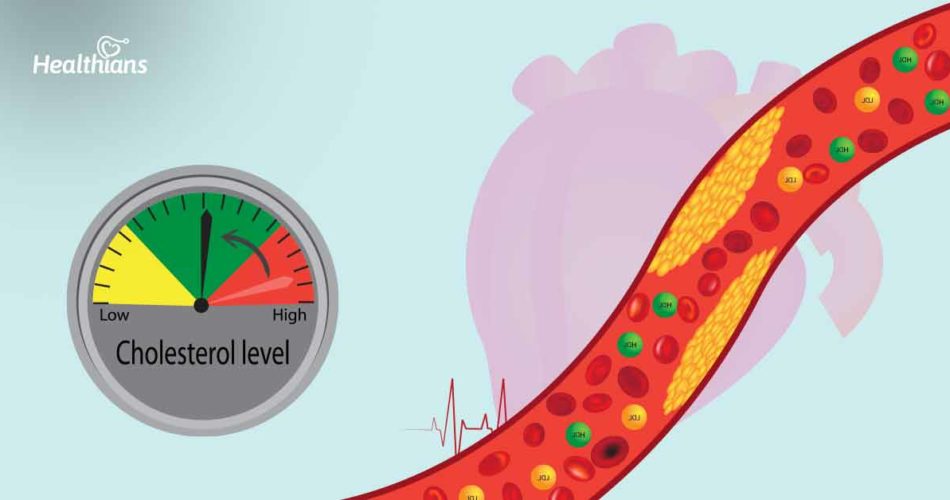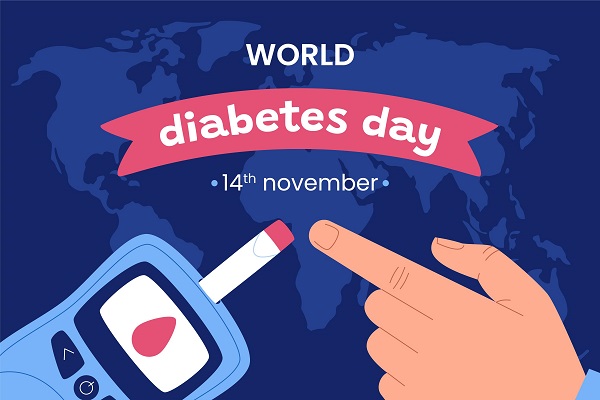Contributed by: Healthians Team
Introduction
Cholesterol, a term you’ve probably heard of, is a waxy and fat-like substance that is present in every cell of the body.
It is an important steroid that travels on lipoproteins (substances comprising both fat and protein) via the bloodstream.
There are two kinds of lipoproteins:
- High-Density Lipoprotein (HDL)
HDL is also known as ‘good cholesterol’ as it helps in removing bad cholesterol from the bloodstream.
HDL takes the bad cholesterol back to the liver, from where it is processed to leave the body. Sufficient levels of HDL also aid in lowering the risk of heart ailments.
- Low-Density Lipoprotein (LDL)
LDL is one of the major causes which leads to blockage in the arteries due to plaque buildup. LDL is also termed ‘bad cholesterol’ because it is associated with a high risk of cardiovascular diseases.
There is also a third kind of lipoprotein called Very Low-Density Lipoprotein (VLDL). As the name suggests, it is related to LDL but there is a small difference between them.
LDL carries cholesterol into the bloodstream which causes plaque buildup, while VLDL carries triglycerides (a type of fat). Unmanaged diabetes, alcohol consumption, and obesity are the most common causes of high VLDL levels.
Having an adequate amount of good cholesterol is important for the healthy functioning of the body as it aids in the following:
- Providing structure to the cells
- Production of oestrogen, testosterone, and adrenal hormones
- Enhancing metabolism
- Help the body in making vitamin D
- Aid in lowering the risk of cognitive decline during old age
Causes of high LDL cholesterol levels
Bad cholesterol levels can increase as a result of a prolonged sedentary lifestyle or poor diet. Some other factors that contribute to an increase in cholesterol levels include:
- Smoking (including secondhand smoke)
- Alcohol consumption
- Being overweight or obese
- Genetic disorder (familial hypercholesterolemia or FH)
Note: There are no specific symptoms that can indicate a rise in cholesterol levels, which makes it a ‘silent condition’ that leads to the occurrence of sudden emergency events such as stroke or heart attack.
If you are thinking about whether you can bring cholesterol levels back to normal or not, then the answer is YES.
By bringing about certain lifestyle changes suggested further in this article, you may be able to lower the levels of bad cholesterol (LDL) and increase good cholesterol levels (HDL).
Quit smoking
Smoking is a dangerous habit that increases the risk of fatality due to cardiovascular diseases.
This life-threatening habit increases the levels of bad cholesterol which sticks to the artery walls, causing hindrance in the blood circulation.
As discussed above, good cholesterol (HDL) helps in lowering bad cholesterol (LDL) from the body, but due to smoking, this phenomenon is also compromised because the habit reduces HDL cholesterol levels.
Once you quit smoking, the heart starts to perform better in a few hours and keeps on improving over time.
Avoid alcohol
Alcohol consumption is another dangerous habit that can become life-threatening. Some studies suggest that when alcohol is consumed, the liver converts it into triglycerides, which is the bad cholesterol that impacts blood circulation. The increased levels of triglycerides can also give rise to fatty liver disease.
The best way to avoid this condition is by cutting alcohol consumption from your lifestyle. Reduce the intake gradually, as quitting alcohol may cause side effects like headache, loss of appetite, increased blood pressure, and heart palpitations.
Avoid high cholesterol foods
Before you start reducing the intake of high cholesterol foods, know that high levels of good cholesterol are essential for the healthy functioning of the body.
Thus, cutting the intake of all foods that contain cholesterol can minimize HDL levels and may lead to health deterioration.
Therefore, it is essential to know some specific foods that can increase LDL levels and minimize their consumption. Here’s a list of them:
- Full-fat dairy products such as whole milk, butter, and full-fat yoghurt
- Cakes, pastries, biscuits, and pies
- Red meat like lamb chops, mutton
- Coconut and palm oils
- Sausages, bacon, and kebabs
- Fried foods
Focus on heart-healthy food
The levels of cholesterol directly impact the functioning of the heart. Consuming foods loaded with bad cholesterol can cause slow blood circulation while good cholesterol foods can improve it.
Thus, for improved functioning of the heart and minimized risk of heart ailments, you must focus on good cholesterol foods such as:
- Olive oil
- Whole-grain foods
- Beans and legumes
- High-fibre fruits and vegetables
- Dry fruits (nuts)
- Chia seeds
Heart-healthy foods are essential for your overall well-being, but remember to consume them in moderation as excessive intake may give rise to stomach ailments.
Regular exercises
Your weight plays a major role in improving or declining your health. Exercising regularly helps in maintaining healthy body weight while improving cardiovascular health.
Walking, running, aerobics, strength training, pilates, and swimming are some exercises that can help you stay healthy.
Final thoughts
Rising LDL cholesterol levels is a matter of concern as it can cause serious health issues such as stroke and heart attack.
The above-mentioned five tips can help you maintain good cholesterol levels and reduce the risk of cardiovascular diseases.
Furthermore, as we know that the rising cholesterol level is a silent condition with no early symptoms, the best way to determine cholesterol levels in the body is by undergoing preventive health checkups.
These health checks can provide you with a comprehensive insight into your health, allowing you to take necessary measures on time to promote your well-being.




